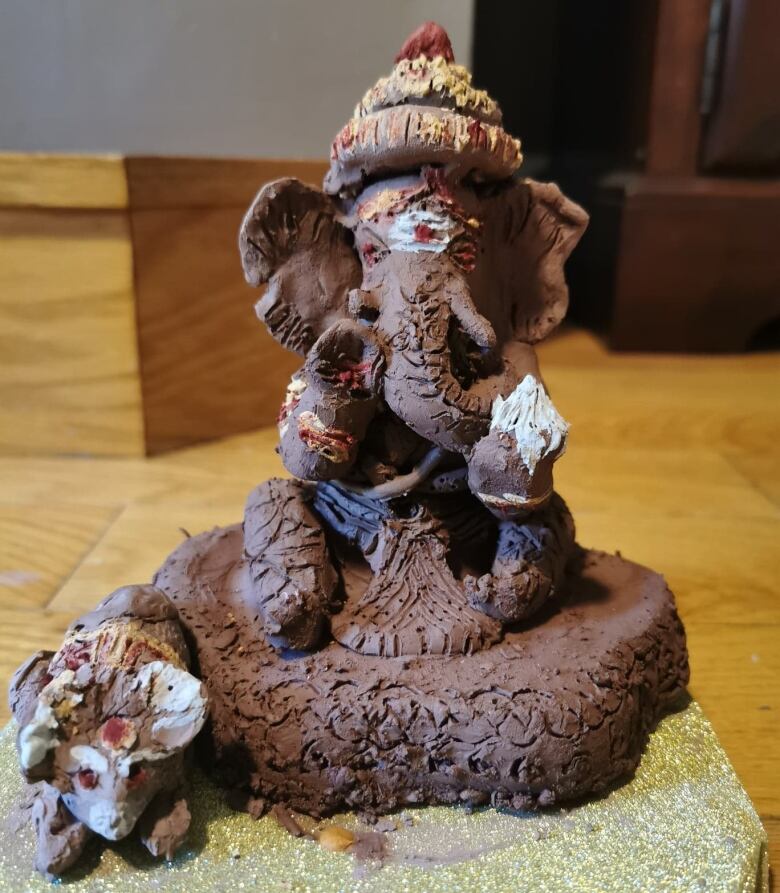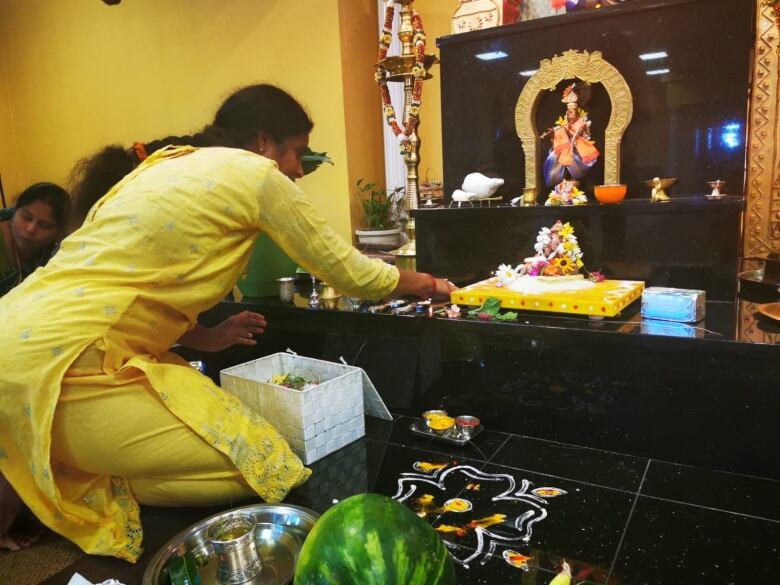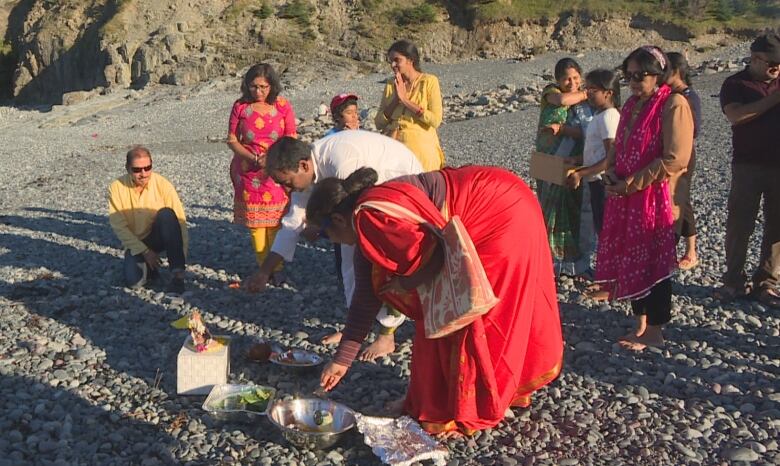N.L. Hindu community celebrates Ganesh Chaturthi, with a pandemic twist
The annual idol immersion at Middle Cove Beach was small in numbers but strong in prayers

Middle Cove Beach witnesses a unique spectacle every year and it isn't the annual polar bear dip or rolling capelin.
For more than 50years, the beach has fostered a special relationship with the Hindu community in Newfoundland and Labrador, sitting at the heart ofa 10-day celebration.
But like much else in 2020, that larger celebration, Ganesh Chaturthi, has had to bend and adapt to the times.
"We do not want to, in any way, shape or form, contribute to the spread of COVID-19 in our province or anywhere else," said Aruna Ralhan, chair of the Hindu Temple in St. John's.
The board at the temple had to put in some extra legwork and add in a little 21st-century technology to make Ganesh Chaturthi happen, although some traditions managed to stay largely the same.
Shaping the Ganesha murti
Every year, a member of the province'sHindu communityis tasked with moulding a clay idol, or murti, of the elephant-headed godGanesha. In 2020, theresponsibility fell to Saradha Venkatraman, who said itwas nothing short of a big honour.
"The Ganesha idol is basically made out of eco-friendly clay koomkoom and turmeric and the white colour modak that you see on the Ganesha's hand, it's just rice flour coating," said Venkatraman.
With the help of her children, Adira and Arnav, Venkatraman spent more than 10 hours shaping the idol.
"I had the perfect hands to knead it... [to] form the shapes," said 12-year-old Adira.
While this was their first year creating a Ganesha murti as a family, Venkatramansaid she will be turning it into an annual tradition, much like decorating a Christmas tree.
"I've been here for 15 years. I want to continue the traditions here too, with the kids, so that they will know how it is back [in India]. They should not miss it," said Venkatraman.

The deep ties of the Atlantic and Ganesha
The immersion of the murtiinto the water, Ganesh Visarjan, is part of thelarge annual festivityGanesh Chaturthi,which is celebrated around August or September on the Gregorian calendar.
Falling on the fourth day of the waxing moon cycle, in the sixth month of the Hindu calendar, called Bhadrapada, Ganesha is said to visit the homes of his devout followers.
The remover of obstacles, Ganesha or, in his humanoid avatar, Ganapati is prayed to before the start of any auspicious activity in Hinduism.
The 10-day celebration, commemorating Ganesha's arrival to Earth, comes to an end when the idol is immersed in a flowing body of water.
"Water in Hinduism is considered sacred,"said Seshu Adluri,a structural engineering professor at Memorial University, who also carries out the rites and rituals associated with the festival on behalf of the local Hindu community.
The ocean is particularly sacred,Adluri said, in that just as all the waters eventually reach the ocean, in a similar manner, regardless of spiritual backgrounds, all prayers reach the divine.

Prayers, with a pandemic wist
In India, the celebration also serves as a means to bring people together. Idols as tall as six-storey buildings are set up uniting people through food, songs, prayers, dance and revelry.
However, with the pandemic restricting public lifein India as well as in N.L., the Hindu diaspora has had to adapt its ceremonies.
Keeping in mind the guidelines set by the province's public health regulations, and mindful of their responsibilities to carry out a safe Ganesh Chaturthi, board members of the Hindu Temple in St. John's made some judicious choices.
"The board is very cognizant of the fact of the circumstances we're in,"said Ralhan.
"We owe it to humanity to make sure that we keep all of ourselves safe,"
The board implementedmeasures that included not gathering for a post-prayer meal,or having people gather for singing and dancing.The temple, despite having a capacity to accommodate 50 people, chose to have only about half a dozen people participate in its ceremonies.
To keep a sense of normalcy, the community made use of technology telecasting the puja, or prayers, through an online platform to its patrons.

Typically in the past years, on the day of the Visarjan, Middle Cove Beach is packed with hundreds of people belonging to the Hindu diaspora in Newfoundland and Labrador.
This year, to maintain physical distance protocols and restrict numbers on the beach, the board permitted only a handful to participate in the immersion of the Ganesha idol.
Albeit subdued in audience numbers,the idol wended its way from the Hindu Temple to the rocky shores of Middle Cove. And like every year, the community's prayers reverberated as the eco-friendly Ganesha made his way into the cool waters of the Atlantic Ocean.












_(720p).jpg)


 OFFICIAL HD MUSIC VIDEO.jpg)
.jpg)



























































































